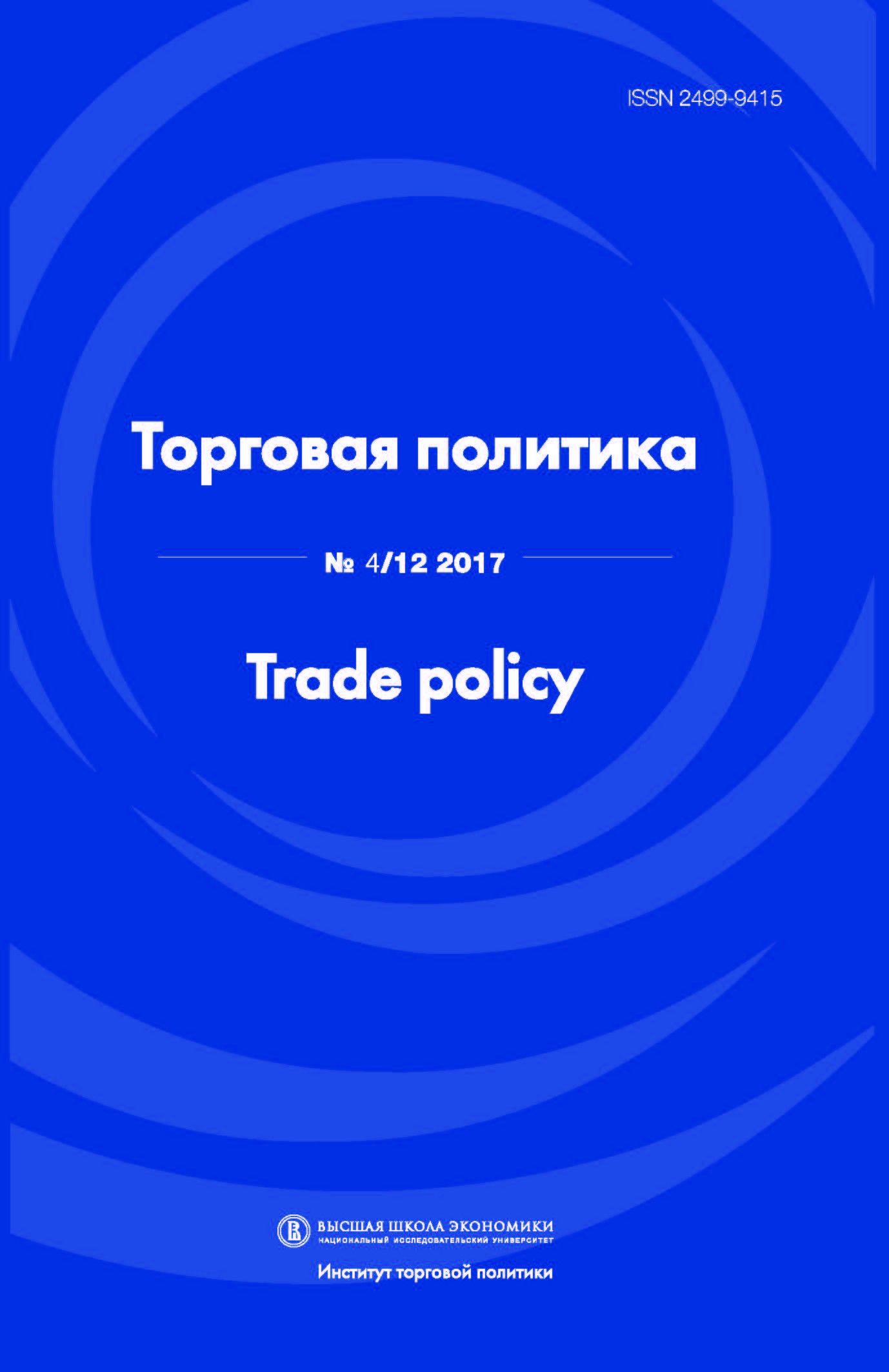Trade Integration in Services in the Eurasian Economic Union: Between Myth and Reality
Abstract
Within the framework of the Eurasian Economic Union (EAEU), a gradual formation of the single market of services is envisaged, both separately for different
sectors and subsectors, and for horizontal level among the Member States. The order and formation of the services market and its sectoral coverage are to be determined by the liberalization plans approved by the Supreme Eurasian Economic Council. The countries prepared a set of Rules of trade in services, institutions, and activities that would allow to shape the licensing and regulatory system, make it more transparent, and reduce administrative and financial burden for authorities and businesses within the countries of the Union. It is expected that practical application of the Rules would cause reduction of the costs of services and goods for the population of the EAEU countries. Over the past few years, the countries of the EAEU have made an unprecedented and ambitious way forward in the formation of the single market for services in terms of a normative basis. At the same time, much remains to be done with regard to practical implementation of the proposed measures which is impossible without proper functioning of institutions, reduction of mutual technical and administrative barriers, and a favorable
investment climate in the economies of the participating countries.
Downloads
References
Treaty on the Eurasian Economic Union. [Electronic Resource] URL:<https://docs.eaeunion.org> (accessed 25.11.2017).
A. Aslund (2013). Push for Customs Union Turns Friends to Foes // The Moscow Times. [Electronic Resource] URL: <http://www.themoscow-times.com/opinion/article/push-forcustoms-union-turns-friends-to-foes/485789.html> (accessed 28.11.2017).
O. V. Biryukova (2014). Russian Knowledge-Intensive Services in International Trade // Studies on Russian Economic Development. Vol. 25, No. 1, pp. 77–83.
O. V. Biryukova Regulation of International Trade in Services: Tutorial. HSE Publishing House, Moscow, 2016 (in Russian).
A. Daniltsev, O. Biryukova (2015). Beyond the GATS: Implicit Engines in Services RTAs. Panoeconomicus. Vol. 62, No. 3, pp. 321–337.
Eurasian Development Bank, Centre for Integration Studies (2015). An Assessment of the Impact of Non-Tariff Barriers in the EAEU: Results of the Survey of Exporters. [Electronic Resource] URL: <http://eabr.org/e/research/centreCIS/projectsandreportsCIS/index.php?id_4=47864&linked_block_id=0> (accessed 22.11.2017).
Eurasian Development Bank, Centre for Integration Studies (2016). Monitoring of Mutual Investments in CIS Countries 2016. Saint Petersburg [Electronic Resource] URL: <http://www.eabr.org/general/upload/reports/EDB_Centre_2016Report_39_MIM_CIS_ENG.pdf> (accessed 30.11.2017).
J. Francois, M. Manchin, P. Tomberger (2015). Services Linkages and the Value-Added Content of Trade. The World Economy. Vol. 38, Issue 11, pp. 1631–1649, 2015.
B. Hoekman, P. Mavroidis (2015). Regulatory Spillovers and the Trading System: From Coherence to Cooperation, Geneva, International Centre for Trade and Sustainable Development and World Economic Forum.
A. Knobel (2016). The Influence of Services Trade Liberalization on Service Flows and Industry Productivity in CIS Countries and Russia. Applied Econometrics. Vol. 44, pp. 75–99 (in Russian).
N. Kondrat’eva (2016). Eurasian Economic Union: Achievements and Prospects. World Economy and International Relations. Vol. 60, No. 6, pp. 15–23
(in Russian).
A. Krickovic (2014). Imperial nostalgia or prudent geopolitics? Russia’s efforts to reintegrate the post-Soviet space in geopolitical perspective. Post-Soviet Affairs. Vol. 30, No. 6, pp. 503–528.
A. Melville, M. Mironyuk. Bad Enough Governance: State Capacity and Quality of Institutions in Post-Soviet Autocracies. Post-Soviet Affairs. 2016. Vol. 32, No. 2, pp. 132–151.
C. Michalopoulos (2003). The Integration of Low-Income CIS Members in the World Trading System. Paper prepared for the Lucerne Conference of the CIS-7 Initiative, January 20–22, 2003 (in Russian).
D. Tarr (2016). The Eurasian Economic Union of Russia, Belarus, Kazakhstan, Armenia, and the Kyrgyz Republic: Can It Succeed Where Its Predecessor Failed? Eastern European Economics. Vol. 54, No. 1, 1–22, DOI:10.1080/00128775.2015.1105672.
Eurasian Economic Commission (2017). The main socio-economic indicators of the Eurasian Economic Union. Analytical Review. March 10, 2017.[Electronic Resource] URL: <http://www.eurasiancommission.org/ru/act/integr_i_makroec/dep_stat/econstat/Documents/Indicators201701.pdf>(accessed 12.11.2017).
UNCTAD (2017). World Investment Report 2016. [Electronic Resource] URL: <http://unctad.org/en/PublicationsLibrary/wir2016_en.pdf> (accessed 29.11.2017).
E. Vinokurov (2016). Eurasian Economic Union: A sober look. Voprosy Ekonomiki. No. 12, pp. 43–60 (in Russian).
N. Volchkova, P. Kuznetsova, N. Turdyeva (2016). Economic Integration and New Export Opportunities for the Eurasian Economic Union. International Organisations Research Journal. Vol. 11, No. 4 (2016), pp. 55–70 (in Russian).
World Bank (2016). World Development Report 2016: Digital Dividends (Washington, D.C.).
N. Ziadullaev, S. Ziadullaev (2016). The Eurasian economic union in the context of the Russian integration policy. Society and Economy. No. 8, pp. 5–16 (in Russian).

